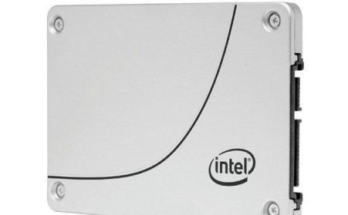Linux administrators are back-end IT experts who install, configure, and maintain Linux operating systems in several organizations. This role includes server-side functions and troubleshooting activities that support business-critical development activity. Linux administrators manage user access and monitoring system stability and security through daily access and use.
This role requires linux server administration roles and responsibilities of Linux systems and servers and may require a high level of risk assessment and customer support. Because Linux is an open-source operating system, administrators generally communicate and work with other developers to develop and implement systems extensions.
Although the specific responsibilities of a Linux administrator may vary by industry and industry, the general duties of this role are relatively stable. Based on the list examined, these duties include:
Install and Configure Linux Systems
A Linux administrator’s primary responsibility is to install and configure Linux systems and servers, often for organization-wide deployment. They develop servers and collaborate with individual users to make sure the system is reliable and fast, and answer configuration and installation questions. In this role, Linux administrators also configure the system architecture, including databases and background scripts for specific applications and use cases.
Perform system maintenance | linux server
Linux administrators also perform regular maintenance and troubleshooting on the server-side. This aspect of the role requires Linux administrators to review and report error logs and work on solutions. Often, Linux administrators have to work directly with the system source code to make the necessary changes to ensure reliable performance, and then integrate all amendments into the system as a whole.
Create system backup
Linux, as well as company or industry standards system administrators. They can do this every week, every day or more often, depending on system space and business needs. Promotes system recovery after an accident or other power outage and supports data integrity by making sure information is not lost.
Monitor System Performance
In addition to maintaining Linux systems and servers, Linux administrators also monitor system performance to avoid slowdowns and crashes. They can check traffic reports and reports daily or receive direct reports from end-users. If a Linux administrator detects potential or recurring problems within the system, he develops and distributes solutions so that all staff can use the system.
Provide technical support and guidance
Linux administrators offer technical support and guidance to users and other administrators. Linux administrators often work closely with other developers to answer technical questions and resolve server performance issues. You can also assist users in installing and upgrading Linux software and converting them to existing servers.
Maintain system security
Finally, Linux administrators maintain system security by actively identifying vulnerabilities and vulnerabilities in the system architecture. This part of the work requires a thorough knowledge of viruses and other sources of the system vulnerability and requires Linux administrators to actively develop security, especially when deploying system-wide changes that may open up new vulnerabilities.
Duties of a system administrator
The responsibilities of the system administrator are different and different from organization to organization. Sysadmins are generally responsible for installing, maintaining and maintaining servers or other computer systems, as well as for planning and addressing service disruptions and other issues. Additional responsibilities may include scripts or light programs, project management for system-related projects.
The system administrator is responsible for:
- User administration (setup and maintaining account)
- Maintaining system
- Verify that peripherals are working properly
- Quickly arrange the repair for hardware in the occasion of hardware failure
- Monitor system performance
- Create file systems
- Install software
- Create a backup and recovery policy
- Monitor network communication
- Update the system after the release of new versions of OS and application software
- Implement the network and computer systems policy
- Set the user’s security policy. System administrators need to know about computer security (firewalls, attack detection systems, etc.)
- Documentation in the form of internal wiki
- Password and identity management
What’s so special about the system administrator’s account?
The master account has full (unlimited) access so he can work on the system. For example, root can remove critical system files. Besides, there is no way you can restore files other than using tape backups or backup disk systems.
Many system administration tasks can be automated using Perl / Python or script scripts. For example:
- • Create new users
- • Reset user passwords
- • Lock / unlock user accounts
- • Monitor server security
- • Follow special services etc.
An essential skill for the system manager
Troubleshooting, period. This can sometimes cause all kinds of restraint and stress. You are called to resolve a problem when the workstation or server is off. You should be able to diagnose the problem quickly and correctly. You need to understand what is wrong and how to solve it in a short time.
System Administrator does not…
- • Cookie software engineer.
- • Developers.
- Applications You are not a designer to create new application software.
However, you need to know how to distribute and complete software and must be familiar with many programming languages commonly used for scripting or automation of daily tasks such as shell, awk, Perl, Python, etc.



